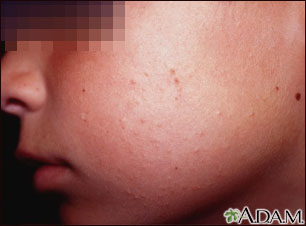Is the Needle Length on Epinephrine Auto-Injectors Too Short?
 Image via Wikipedia
Image via Wikipedia
A recent study published in the July issue of the Journal of Pediatrics, however, suggests that intramuscular injection may not be achieved in a significant percentage of children with the current needle lengths of epinephrine auto-injectors (EpiPen and TwinJect). Ultrasound measurements of the thickness of subcutaneous tissue in children indicated that the needle lengths of the auto-injectors may be too short to penetrate into the muscle.
When the outcome that one is attempting to prevent is death, this is no small issue.
However, as the study authors themselves note, the method of measurement was not an exact approximation of the injection technique. Ultrasound generally uses light pressure, which may overestimate the depth of tissue that a needle needs to traverse to reach the muscle. Injection of epinephrine using an auto-injector, however, requires a firm hand. When I demonstrate the proper use of autoinjectable epinephrine, I generally end up with bruises on my thigh. Therefore, when used properly, the current needle lengths may be sufficient to deliver the mediation to its desired location after all.
That said, I often note that patients seem to be timid when it comes to auto-injected epinephrine- both in terms of using it in the first place, and also in terms of not being aggresive enough with the amount of pressure applied during administration. This is why adequate training for this medication is so vitally important. It is simply not enough to be given a prescription for an EpiPen- the patient, family and caregivers MUST be trained in the use of the injector with a demonstration device.
The study authors have recommended increasing the needle length for auto-injected epinephrine. More research likely needs to be done before the manufacturers of these devices will increase the needle lengths. Until that time, the only way you can ensure that your child will receive an intramuscular injection is to have excellent technique.
If you have an EpiPen for your child, please ask your physician for guidance and a demonstration of the proper way to administer this important medication. It just may be the most important training you ever have!
![Reblog this post [with Zemanta]](http://img.zemanta.com/reblog_e.png?x-id=385eee39-f1ec-4f6b-8c07-77e836d3ba6a)



Comments
Post a Comment
Thanks for taking the time to comment on this blog's posts! Let's keep the discussion engaging and free of frivolous advertising or vulgarity. It's a family show, folks!